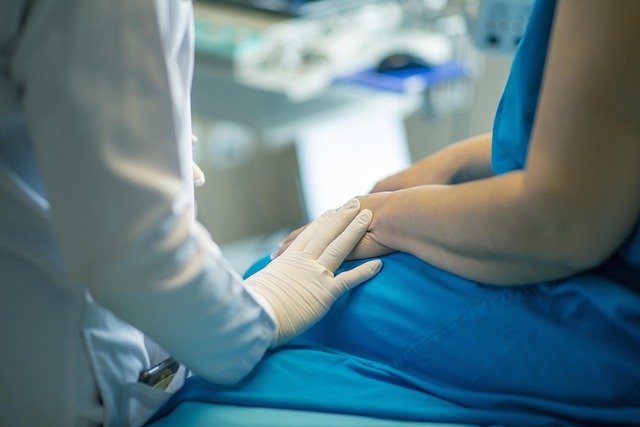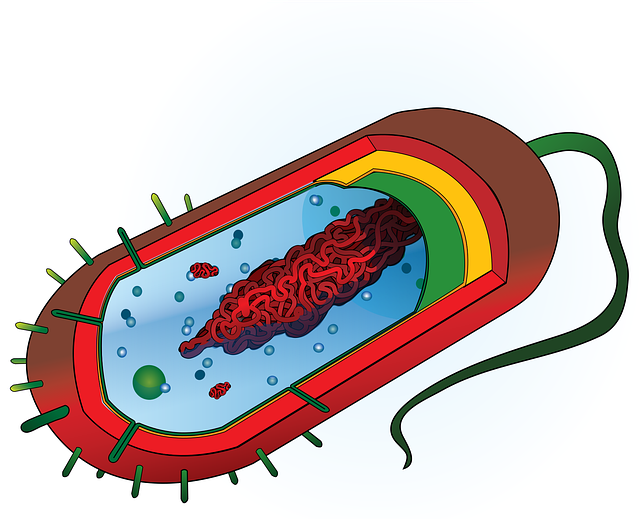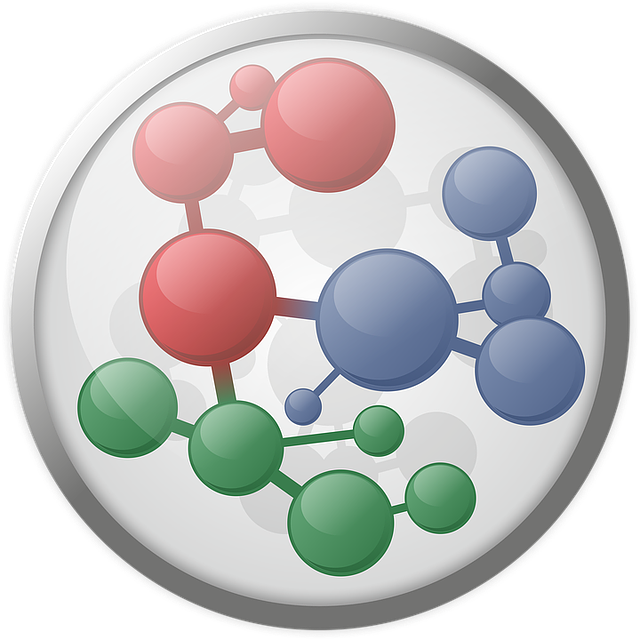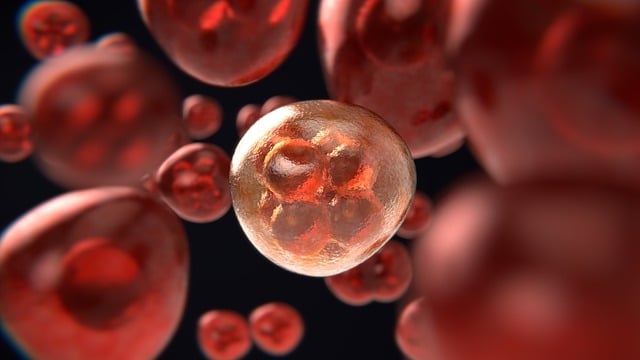Stem cell culture media, a specialized nutritional solution, is vital for growing and maintaining stem cells outside the body (in vitro). Key components include essential nutrients, vitamins, minerals, and growth factors mimicking natural signals. Researchers must carefully choose and optimize media, considering quality, ethical aspects, and consistency, to control stem cell behavior effectively. This enables advancements in regenerative medicine and tissue engineering. Different stem cell types require unique formulations, with ESCs using DMEM/F12 + LIF and iPSCs favoring animal-component-free, defined media. Precise media engineering, including pH balance and growth factor selection, is crucial for efficient cell proliferation and differentiation control. Clinical applications demand tailored media optimized for biocompatibility, stability, and sterilization, with a focus on serum-free, mitogen-free formulations to enhance safety and accessibility of stem cell therapy.
“Unleashing the potential of stem cells requires a deep understanding of their unique cultural needs. This article delves into the intricate world of stem cell culture media, exploring its fundamental components and how they support cellular growth. We dissect various types tailored to distinct cell types, emphasizing the significance of growth factors in media formulation. Additionally, we navigate the nuances of optimizing media for research versus clinical applications. Challenges, considerations, and future trends in stem cell culture media development promise to shape the field, opening doors to groundbreaking advancements.”
- Understanding Stem Cell Culture Media: Basics and Components
- Types of Specialty Media for Different Cell Types
- The Role of Growth Factors in Stem Cell Media Formulation
- Optimizing Media for Specific Applications: Research vs. Clinical Use
- Challenges and Considerations in Choosing the Right Stem Cell Media
- Future Trends in Stem Cell Culture Media Development
Understanding Stem Cell Culture Media: Basics and Components

Stem cell culture media is a specialized nutritional solution designed to support the growth and maintenance of stem cells in vitro. Understanding its components is key to optimizing cell culture processes, which is especially crucial for developing effective stem cell therapies. The media typically includes essential nutrients like amino acids, vitamins, and minerals, as well as growth factors that mimic the natural signals these cells receive in vivo.
When considering stem cell therapy media, several factors come into play. Assessing media quality using established guidelines ensures the viability and functionality of these delicate cells. Alternatives to traditional components, such as fetal bovine serum (FBS), are increasingly sought after to address ethical concerns and improve lot-to-lot consistency. By carefully selecting and optimizing culture media, researchers can better control stem cell behavior, enabling advancements in regenerative medicine and tissue engineering applications.
Types of Specialty Media for Different Cell Types
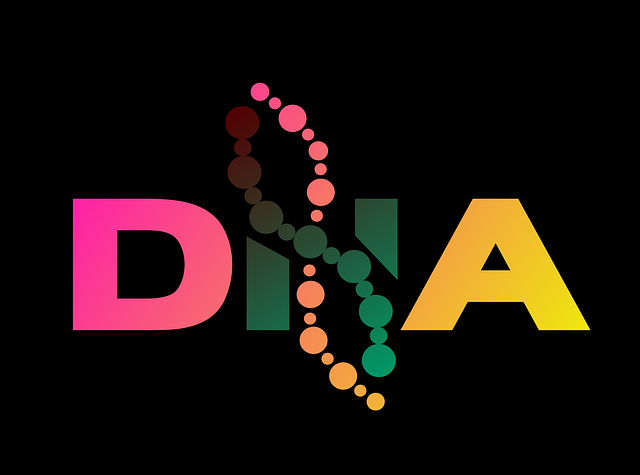
Specialty media for specific cells is a rapidly evolving field, especially with advancements in stem cell research. Different cell types, including embryonic stem cells (ESCs) and induced pluripotent stem cells (iPSCs), require distinct stem cell culture media formulations to thrive in vitro. The optimal media composition varies based on factors like cell lineage, passage number, and desired differentiation outcomes.
For instance, ESCs commonly rely on media such as DMEM/F12 supplemented with Leukemia Inhibitory Factor (LIF), while iPSCs often utilize defined, animal-component-free media formulations to minimize potential contamination risks. Stem cell media pH balance adjustments are crucial, as cells are sensitive to changes in acidity or alkalinity. Careful media screening for stem cell applications is essential to identify the most suitable components that support cell proliferation and maintenance while minimizing unwanted differentiation or stress responses.
The Role of Growth Factors in Stem Cell Media Formulation

Growth factors play a pivotal role in stem cell media formulation, as they mimic natural signals that stimulate cellular proliferation and differentiation. By incorporating specific growth factors tailored to the needs of different cell types, researchers can create optimal stem cell culture media. This precision engineering is crucial for achieving robust stem cell therapy media considerations, as it ensures the cells remain undifferentiated or differentiate into desired lineages efficiently.
The choice of growth factors and their concentrations is a critical aspect of media optimization for clinical-grade stem cells. While serum replacement options in stem cell culture can provide essential nutrients, they often contain variable levels of growth factors and other components that may affect cell behavior. Therefore, careful selection and optimization of the media formula are essential to achieve consistent and reproducible results, which is vital for the success of any cellular therapy application.
Optimizing Media for Specific Applications: Research vs. Clinical Use

In the realm of stem cell research and therapy, optimizing media for specific applications is paramount. While basic research often requires a one-size-fits-all approach to stem cell culture media, clinical use necessitates tailored formulations. Stem cell therapy media considerations go beyond the laboratory, focusing on factors like biocompatibility, stability, and sterilization to ensure safe and effective human embryonic stem cell cultivation techniques. Researchers must consider not just what goes into the media but also the dynamic interactions between cells and their environment during customized stem cell culture conditions.
The transition from research to clinical application demands a deeper understanding of cellular needs at different stages of development. For instance, media formulations for pluripotent stem cells may differ significantly from those used for differentiated cell types. This nuanced approach ensures that stem cell therapy media considerations, such as growth factors and nutritional supplements, are optimized for both the health and functionality of the targeted cells, ultimately enhancing the efficacy of stem cell culture media in therapeutic settings.
Challenges and Considerations in Choosing the Right Stem Cell Media

Choosing the appropriate stem cell culture media is a complex task given the diverse needs and characteristics of different types of stem cells. One of the primary challenges lies in balancing the essential nutrients, growth factors, and supporting elements required for optimal cell proliferation while minimizing the risk of contamination or unwanted differentiation. The composition of defined stem cell media components, such as serum-free stem cell growth medium, plays a critical role in maintaining cellular homogeneity and preventing batch-to-batch variability, which is especially important for clinical applications.
Additionally, media optimization for clinical-grade stem cells demands rigorous testing and formulation adjustments to ensure safety, consistency, and compliance with regulatory standards. Factors such as pH levels, oxygenation, and component quality must be meticulously controlled to support robust cell growth and maintain the undifferentiated state of these valuable cells. Therefore, a thorough understanding of both the scientific principles behind stem cell culture media and the specific requirements of the intended applications is imperative for selecting the right medium.
Future Trends in Stem Cell Culture Media Development

The future of stem cell research is closely tied to advancements in stem cell culture media. As scientists strive for more efficient and ethical methods, the development of specialized media will play a pivotal role. One prominent trend is the creation of serum-free and mitogen-free formulations, catering specifically to the unique requirements of clinical-grade stem cells. These media solutions offer enhanced control over cellular environments, ensuring purity and minimizing potential contamination risks.
Additionally, ongoing efforts in media optimization aim to facilitate the stem cell expansion and subsequent cryopreservation processes. By fine-tuning nutrient profiles and adding essential growth factors, researchers can create media that promotes robust stem cell growth while enabling safe long-term storage. These innovations are set to revolutionize stem cell therapy, making it more accessible and reliable for various medical applications.
Stem cell culture media has evolved significantly, catering to diverse cell types and applications. Understanding the basic components and optimizing formulations are key to success in both research and clinical settings. As we look ahead, future trends promise even more specialized and efficient media, revolutionizing stem cell culture and its potential for therapeutic advancements. By carefully considering the unique requirements of various cell types, researchers can unlock new possibilities in regenerative medicine.






